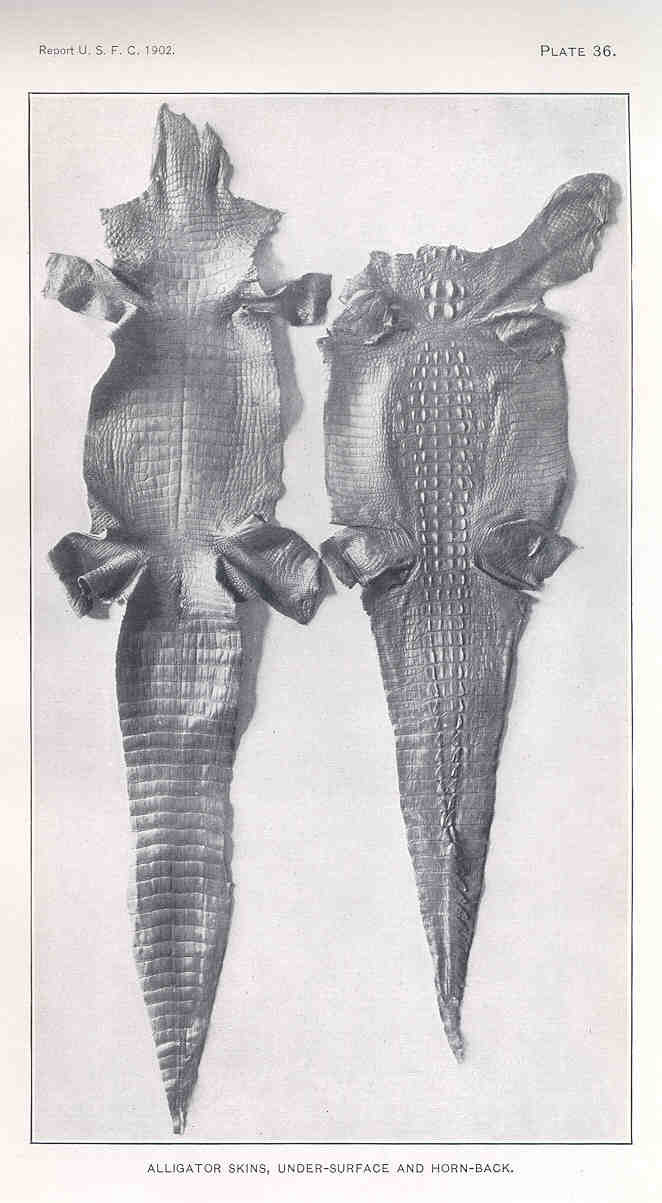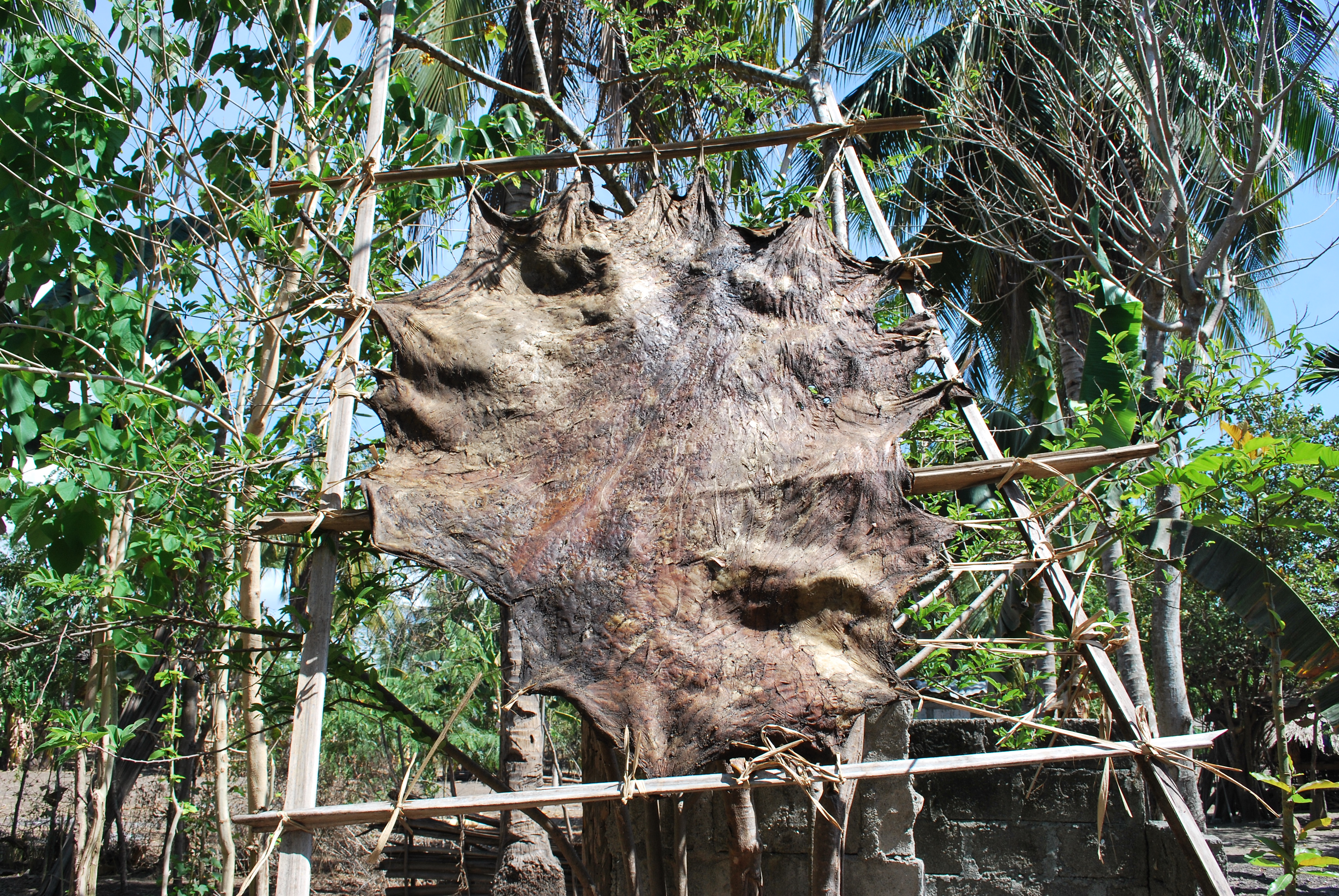|
Alligator Leather
Leather is created when an animal skin or hide is chemically treated in a process called tanning to preserve them for long term use as material for clothing, handbags, footwear, furniture, sports equipment and tools. Alligator leather is also commonly used to create similar items as mentioned above. Alligator leather is not only used due to its durable skin, but also its natural enamel sheen, which is aesthetically pleasing for consumers buying expensive products. History The earliest use of alligator skin was said to be in 1800 in North America. It was used to make boots, shoes, saddles and other products. Despite the first use being recorded in the 1800, alligator skin production increased majorly during the mid-1800s. During the American Civil War in 1861, saddles and boots were made for the Confederate troops. This led to alligator leather rising to the top of choice for leather usage. The durability and softness that we get from alligator leather today started when commerc ... [...More Info...] [...Related Items...] OR: [Wikipedia] [Google] [Baidu] |
Leather
Leather is a strong, flexible and durable material obtained from the tanning, or chemical treatment, of animal skins and hides to prevent decay. The most common leathers come from cattle, sheep, goats, equine animals, buffalo, pigs and hogs, and aquatic animals such as seals and alligators. Leather can be used to make a variety of items, including clothing, footwear, handbags, furniture, tools and sports equipment, and lasts for decades. Leather making has been practiced for more than 7,000 years and the leading producers of leather today are China and India. Animal rights groups claim that modern commercial leather making and the consumption of its products is unethically killing animals. According to the life-cycle assessment (LCA) report for the United Nations Industrial Development Organization, 99% of the raw hides and skins used in the production of leather derive from animals raised for meat and/or dairy production. Critics of tanneries claim that they engage in uns ... [...More Info...] [...Related Items...] OR: [Wikipedia] [Google] [Baidu] |
Sodium Bicarbonate
Sodium bicarbonate (IUPAC name: sodium hydrogencarbonate), commonly known as baking soda or bicarbonate of soda, is a chemical compound with the formula NaHCO3. It is a salt composed of a sodium cation ( Na+) and a bicarbonate anion ( HCO3−). Sodium bicarbonate is a white solid that is crystalline, but often appears as a fine powder. It has a slightly salty, alkaline taste resembling that of washing soda (sodium carbonate). The natural mineral form is nahcolite. It is a component of the mineral natron and is found dissolved in many mineral springs. Nomenclature Because it has long been known and widely used, the salt has many different names such as baking soda, bread soda, cooking soda, and bicarbonate of soda and can often be found near baking powder in stores. The term ''baking soda'' is more common in the United States, while ''bicarbonate of soda'' is more common in Australia, United Kingdom and Ireland. and in many northern/central European countries it is called ''Na ... [...More Info...] [...Related Items...] OR: [Wikipedia] [Google] [Baidu] |
Leather Goods
Leather is a strong, flexible and durable material obtained from the tanning, or chemical treatment, of animal skins and hides to prevent decay. The most common leathers come from cattle, sheep, goats, equine animals, buffalo, pigs and hogs, and aquatic animals such as seals and alligators. Leather can be used to make a variety of items, including clothing, footwear, handbags, furniture, tools and sports equipment, and lasts for decades. Leather making has been practiced for more than 7,000 years and the leading producers of leather today are China and India. Animal rights groups claim that modern commercial leather making and the consumption of its products is unethically killing animals. According to the life-cycle assessment (LCA) report for the United Nations Industrial Development Organization, 99% of the raw hides and skins used in the production of leather derive from animals raised for meat and/or dairy production. Critics of tanneries claim that they engage in uns ... [...More Info...] [...Related Items...] OR: [Wikipedia] [Google] [Baidu] |
Leather Industry
Leather is a strong, flexible and durable material obtained from the tanning, or chemical treatment, of animal skins and hides to prevent decay. The most common leathers come from cattle, sheep, goats, equine animals, buffalo, pigs and hogs, and aquatic animals such as seals and alligators. Leather can be used to make a variety of items, including clothing, footwear, handbags, furniture, tools and sports equipment, and lasts for decades. Leather making has been practiced for more than 7,000 years and the leading producers of leather today are China and India. Animal rights groups claim that modern commercial leather making and the consumption of its products is unethically killing animals. According to the life-cycle assessment (LCA) report for the United Nations Industrial Development Organization, 99% of the raw hides and skins used in the production of leather derive from animals raised for meat and/or dairy production. Critics of tanneries claim that they engage in uns ... [...More Info...] [...Related Items...] OR: [Wikipedia] [Google] [Baidu] |
Alligatoridae
The family Alligatoridae of crocodylians includes alligators, caimans and their extinct relatives. Phylogeny The superfamily Alligatoroidea includes all crocodilians (fossil and extant) that are more closely related to the American alligator than to either the Nile crocodile or the gharial. This is a stem-based definition for alligators, and is more inclusive than the crown group Alligatoridae. As a crown group, Alligatoridae only includes the last common ancestor of all extant (living) alligators, caimans, and their descendants (living or extinct), whereas Alligatoroidea, as a stem-based group, also includes more basal extinct alligator ancestors that are more closely related to living alligators than to crocodiles or gavialids. When considering only living taxa (neontology), this makes Alligatoroidea and Alligatoridae redundant. The simplified cladogram below shows Alligatoridae's relationships to other extant (living) crocodilians. The below detailed cladogram show ... [...More Info...] [...Related Items...] OR: [Wikipedia] [Google] [Baidu] |
Anthrax
Anthrax is an infection caused by the bacterium ''Bacillus anthracis''. It can occur in four forms: skin, lungs, intestinal, and injection. Symptom onset occurs between one day and more than two months after the infection is contracted. The skin form presents with a small blister with surrounding swelling that often turns into a painless ulcer with a black center. The inhalation form presents with fever, chest pain and shortness of breath. The intestinal form presents with diarrhea (which may contain blood), abdominal pains, nausea and vomiting. The injection form presents with fever and an abscess at the site of drug injection. According to the USA's Centers for Disease Control and Prevention, the first clinical descriptions of cutaneous anthrax were given by Maret in 1752 and Fournier in 1769. Before that anthrax had been described only through historical accounts. The Prussian scientist Robert Koch (1843–1910) was the first to identify ''Bacillus anthracis'' as the bacteri ... [...More Info...] [...Related Items...] OR: [Wikipedia] [Google] [Baidu] |
Chromium
Chromium is a chemical element with the symbol Cr and atomic number 24. It is the first element in group 6. It is a steely-grey, lustrous, hard, and brittle transition metal. Chromium metal is valued for its high corrosion resistance and hardness. A major development in steel production was the discovery that steel could be made highly resistant to corrosion and discoloration by adding metallic chromium to form stainless steel. Stainless steel and chrome plating (electroplating with chromium) together comprise 85% of the commercial use. Chromium is also greatly valued as a metal that is able to be highly polished while resisting tarnishing. Polished chromium reflects almost 70% of the visible spectrum, and almost 90% of infrared light. The name of the element is derived from the Greek word χρῶμα, ''chrōma'', meaning color, because many chromium compounds are intensely colored. Industrial production of chromium proceeds from chromite ore (mostly FeCr2O4) to produce ferro ... [...More Info...] [...Related Items...] OR: [Wikipedia] [Google] [Baidu] |
Skin Reaction To Anthrax
Skin is the layer of usually soft, flexible outer tissue covering the body of a vertebrate animal, with three main functions: protection, regulation, and sensation. Other animal coverings, such as the arthropod exoskeleton, have different developmental origin, structure and chemical composition. The adjective cutaneous means "of the skin" (from Latin ''cutis'' 'skin'). In mammals, the skin is an organ of the integumentary system made up of multiple layers of ectodermal tissue and guards the underlying muscles, bones, ligaments, and internal organs. Skin of a different nature exists in amphibians, reptiles, and birds. Skin (including cutaneous and subcutaneous tissues) plays crucial roles in formation, structure, and function of extraskeletal apparatus such as horns of bovids (e.g., cattle) and rhinos, cervids' antlers, giraffids' ossicones, armadillos' osteoderm, and os penis/os clitoris. All mammals have some hair on their skin, even marine mammals like whales, dolphins, ... [...More Info...] [...Related Items...] OR: [Wikipedia] [Google] [Baidu] |
Bangladesh
Bangladesh (}, ), officially the People's Republic of Bangladesh, is a country in South Asia. It is the eighth-most populous country in the world, with a population exceeding 165 million people in an area of . Bangladesh is among the most densely populated countries in the world, and shares land borders with India to the west, north, and east, and Myanmar to the southeast; to the south it has a coastline along the Bay of Bengal. It is narrowly separated from Bhutan and Nepal by the Siliguri Corridor; and from China by the Indian state of Sikkim in the north. Dhaka, the capital and largest city, is the nation's political, financial and cultural centre. Chittagong, the second-largest city, is the busiest port on the Bay of Bengal. The official language is Bengali, one of the easternmost branches of the Indo-European language family. Bangladesh forms the sovereign part of the historic and ethnolinguistic region of Bengal, which was divided during the Partition of India in ... [...More Info...] [...Related Items...] OR: [Wikipedia] [Google] [Baidu] |
Hazaribagh Thana
Hazaribagh ( bn, হাজারীবাগ) is a Thana of Dhaka District in the Division of Dhaka, Bangladesh. Hazaribagh is part of Old Town, Dhaka, Bangladesh. 95% of Bangladesh's tanneries, which is where animal skins are processed to make leather, were located in or around Hazaribagh before they moved to Hemayatpur, Savar. In Hazaribagh, traditional establishments, culture, language and food can be found in daily life practices. Owing to its location near Buriganga River, Hazaribagh shares significant history as well. It is one of the most densely populated places on earth, though it is criticised for its low living standards. Geography Hazaribagh is located at . Its total area is 3.58 km2. Demographics This Hazaribagh has a population of 75,458. Males constitute 58.67% of the population, and females 41.33%. Hazaribagh has an average literacy rate of 53.67%, and the national average of 32.4% literate. Administration Hazaribagh has 3 Unions/Wards, 15 Mauzas/Mahallas, ... [...More Info...] [...Related Items...] OR: [Wikipedia] [Google] [Baidu] |
Chromium Tanning
Leather is a strong, flexible and durable material obtained from the tanning, or chemical treatment, of animal skins and hides to prevent decay. The most common leathers come from cattle, sheep, goats, equine animals, buffalo, pigs and hogs, and aquatic animals such as seals and alligators. Leather can be used to make a variety of items, including clothing, footwear, handbags, furniture, tools and sports equipment, and lasts for decades. Leather making has been practiced for more than 7,000 years and the leading producers of leather today are China and India. Animal rights groups claim that modern commercial leather making and the consumption of its products is unethically killing animals. According to the life-cycle assessment (LCA) report for the United Nations Industrial Development Organization, 99% of the raw hides and skins used in the production of leather derive from animals raised for meat and/or dairy production. Critics of tanneries claim that they engage in uns ... [...More Info...] [...Related Items...] OR: [Wikipedia] [Google] [Baidu] |








